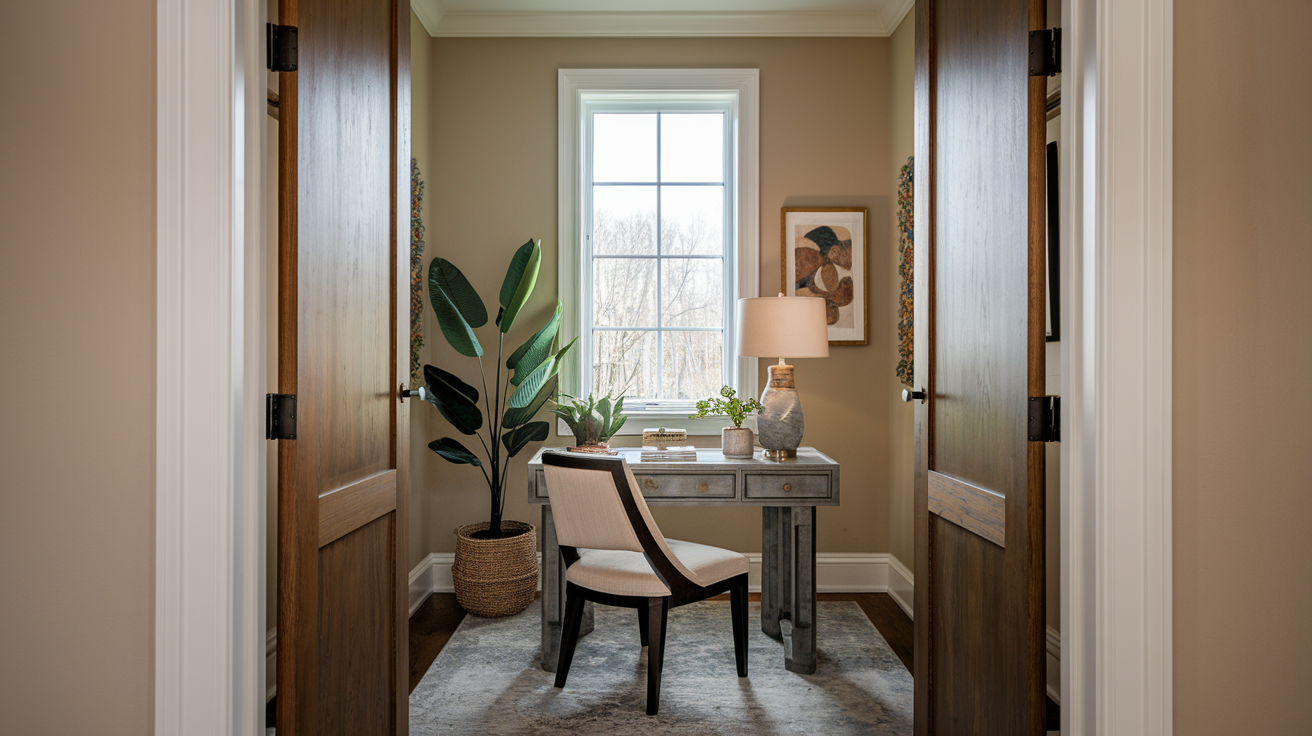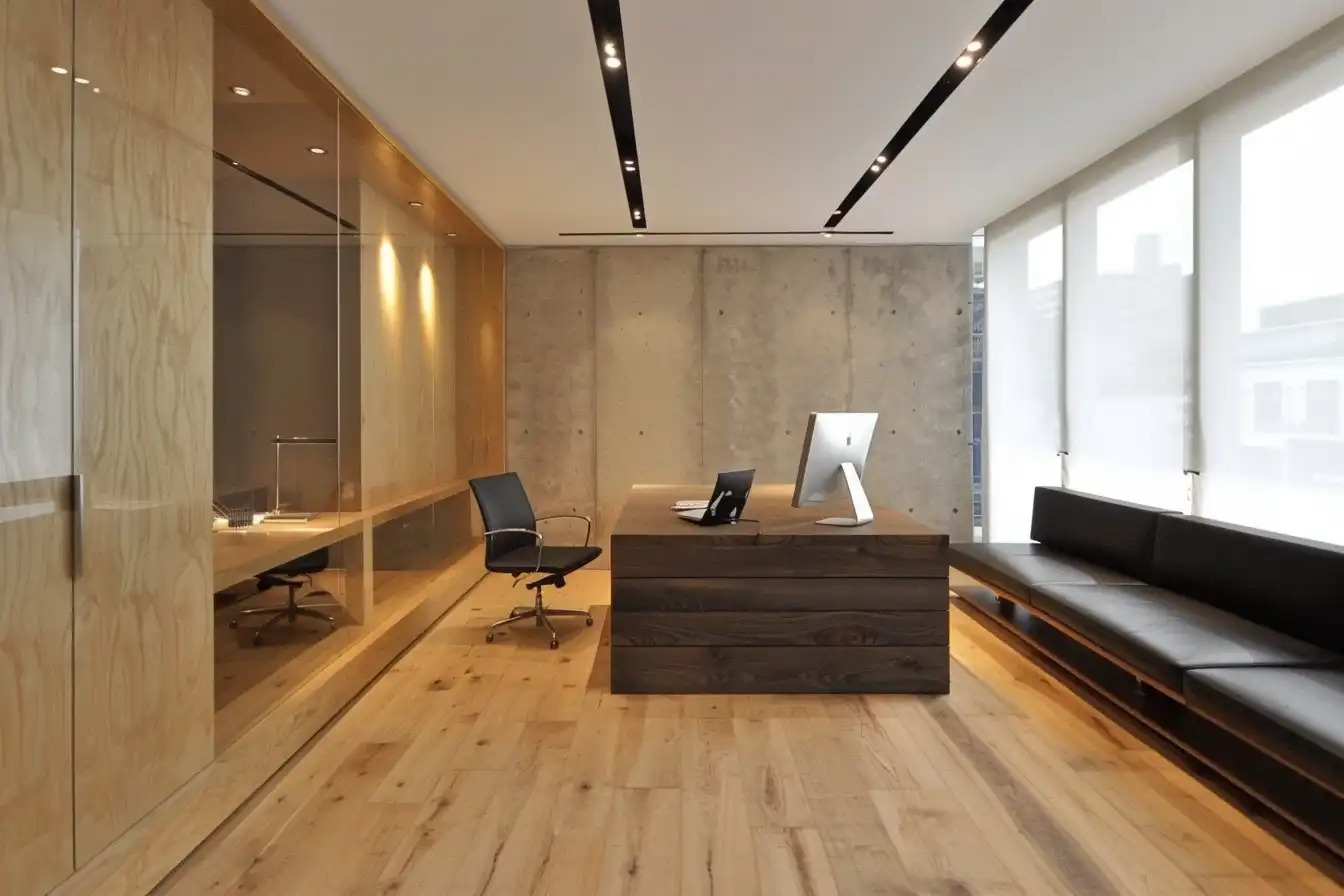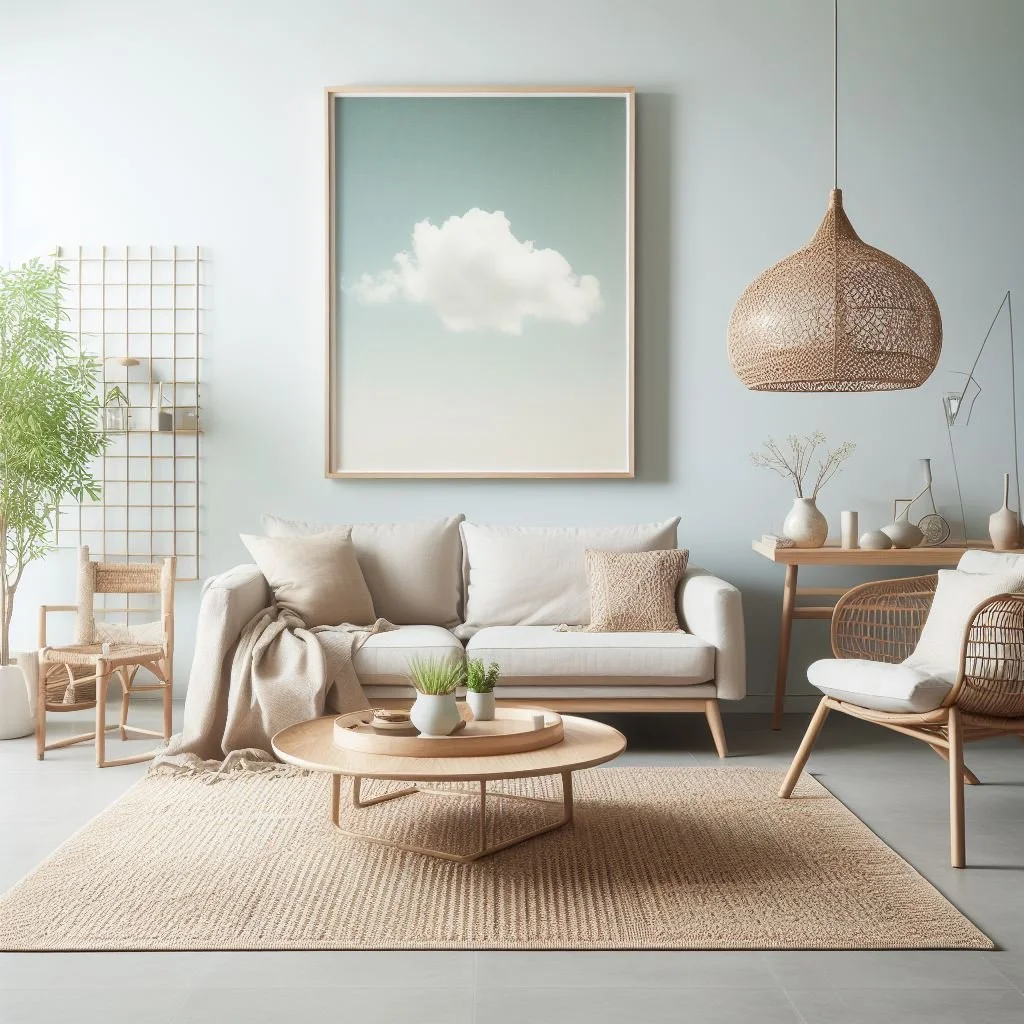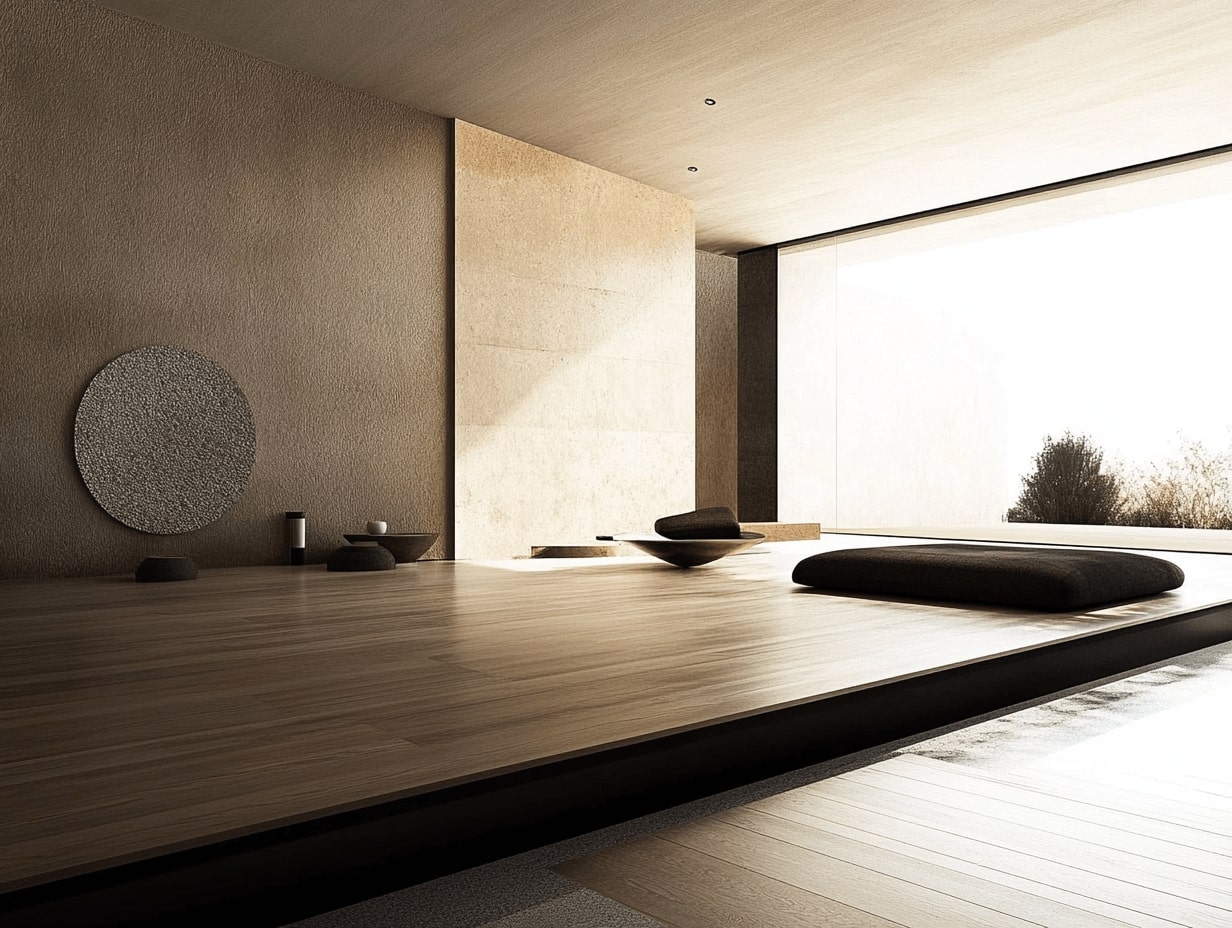How the choice of minimalist colors and textures can influence the feeling of organization in small spaces

Embracing Minimalism in Limited Areas
Mastering the art of organization in compact living spaces can feel overwhelming, especially in a fast-paced world where every square foot counts. However, leveraging the power of minimalist colors and textures is essential for creating environments that not only appear larger but also promote a sense of calm and order. Understanding the intricate interplay of these design elements can transform a crowded room into a peaceful haven.
- Colors: Opting for soft hues such as whites, grays, and pastel shades does much more than please the eye; these colors reflect light and create an illusion of space. For instance, a pale blue or soft lavender can transform a small bedroom, making it feel airy and expansive. These colors help to blur the edges of walls, contributing to a seamless flow throughout the room.
- Textures: The incorporation of smooth or matte finishes plays a crucial role in minimizing visual clutter. Instead of glossy surfaces that may reflect too much light and create chaos, matte finishes on furniture or walls can enhance a serene aesthetic. Consider a matte kitchen backsplash made of ceramic or a smooth, untextured wall paint that exemplifies this principle.
- Contrast: The strategic use of contrasting minimalist elements can powerfully accentuate organization by delineating spaces and specific functions. For example, using a deep charcoal for a work area wall against soft white surroundings demarcates the workspace while maintaining an overall minimalist vibe.
This intentional approach to design not only ensures that spaces appear well-organized; it also fosters a sense of tranquility. A wealth of research in color psychology indicates that lighter shades can invoke feelings of peace and clarity—vital components for mental well-being. Think of a softly painted living room inviting relaxation and mindfulness.
- Emotional Impact: Colors affect mood considerably. For instance, soft greens and blues are often linked with calmness, while warm neutrals can evoke cozy, inviting feelings. Understanding these emotional triggers helps in selecting the right palette for various functions within the space, ultimately affecting productivity and relaxation levels.
- Practicality: Minimalist textures not only present a clean visual but also have practical applications. Smooth surfaces tend to hide dirt and wear more effectively than busy patterns, allowing for a consistently neat appearance without the need for constant upkeep.
- Adaptability: The minimalist design approach is inherently flexible, evolving with the homeowner’s changing needs. As life transitions—from single living to a family environment—these adaptable styles maintain organization and aesthetic appeal, making them sustainable choices.
By diving deep into the options available within color and texture choices, individuals can truly maximize their small spaces. Embracing minimalist design principles empowers homeowners not only to create visually stimulating environments but also to cultivate functional sanctuaries that boost mental clarity and efficiency. This thoughtful attention to detail leads to a lifestyle rooted in organization and peace.
DISCOVER MORE: Click here to learn how simple living can boost your productivity
Color Choices that Cultivate Calm
The foundation of a well-organized small space starts with the judicious selection of colors. Colors have a profound psychological impact, influencing not only our emotions but also our perception of space. In small living areas, light and neutral colors play a pivotal role in enhancing the feeling of openness. For example, colors like crisp white, soft beige, and cool pastel shades reflect natural light, reducing shadows that can make a room feel cramped. This illumination creates a visual box that feels more expansive than it truly is.

Consider the use of monochromatic color schemes. Using various shades of a single color not only brings depth but also maintains coherence across the space. A soft gray sofa with matching pale gray walls can establish a serene setting, minimizing distractions and maximizing a sense of order. This technique avoids the visual clutter that arises from contrasting colors, enabling the eye to flow naturally across the space without interruption.
Textures That Enhance Tranquility
Just as critical as color is the texture of the materials used in small spaces. The choice of smooth versus rough textures can determine the ambiance of a room. For instance, utilizing smooth, matte finishes, such as those found in natural wood or painted walls, can significantly contribute to an uncluttered environment. These surfaces tend to absorb rather than reflect light, promoting a soothing backdrop that reduces visual noise.
- Soft Fabrics: Incorporating textiles like cotton or linen for upholstered items or curtains enhances comfort and warmth while maintaining a minimalist aesthetic. These fabrics create a serene atmosphere that invites relaxation.
- Simple Patterns: If patterns are desired, opting for subtle designs, such as tone-on-tone motifs, can add interest without overwhelming the senses. This restrained approach preserves the minimalist essence.
- Natural Elements: Using natural materials—like stone, wood, or bamboo—infuses the space with organic textures, promoting a harmonious connection with the outdoors. This can calm the mind and visually organize the room.
Textures also serve a practical function; they help hide wear and tear, ensuring that spaces maintain their polished appearance longer. In a small setting, this means less frequent upkeep and an ongoing sense of order. As such, selecting the right materials becomes not merely a question of aesthetic but a practical consideration for maintaining a minimalist style.
In essence, the enlightened use of colors and textures can dramatically transform a small space. By prioritizing these elements in your design choices, you can cultivate an environment that not only feels organized but also radiates tranquility. This not only benefits day-to-day living but also inherently supports overall mental clarity, allowing individuals to thrive even in confined areas.
Understanding Minimalist Colors and Textures
In the pursuit of creating organized and aesthetically pleasing small spaces, minimalist colors and textures play a pivotal role. The choice of a subdued color palette can instantly transform a cramped area into a serene environment. Soft, neutral tones such as whites, creams, and pastels elongate walls and create an illusion of spaciousness, while decluttering the visual takeaway. Furthermore, textures like matte finishes or soft fabrics can enhance this perception by adding depth without overwhelming the space.
Psychological Effects of Colors
Diving deeper into color theory, light shades evoke a sense of calmness, making them perfect for small areas where stress can quickly accumulate. For instance, blue hues are known for their tranquil effects, while greens can bring a refreshing touch of nature indoors. Understanding these color effects can lead to improved mental well-being and improved organization. By strategically incorporating minimalist colors, one can manipulate how rooms are felt and perceived, leading to a more structured ambiance.
Texture’s Subtle Impact
On the other hand, textures also contribute significantly to the feeling of organization. Smooth, sleek surfaces can amplify the effects of minimalist colors, creating a harmonious blend. Pairing matte finishes with natural elements like bamboo or light wood accents can create a cohesive design that speaks to both aesthetics and functionality. This not only adds organization but also invites warmth into the space, ensuring that it feels lived in rather than sterile.
| Advantage | Description |
|---|---|
| Expands Perception | Light colors and textures create a larger visual space, facilitating organization. |
| Enhances Calmness | Soothing colors reduce stress, leading to a more organized mindset in small areas. |
Ultimately, understanding the interplay between color and texture not only enhances the physical space but also influences the psychological state of individuals within it. By mastering these components, anyone can achieve a sense of organization that transcends mere aesthetics.
DISCOVER MORE: Click here to find out how
Creating Cohesion with Thoughtful Accents
While the broader palette of your space sets the stage for serenity, the strategic use of accent colors can further enhance the feeling of organization in small areas. Accents, when chosen wisely, can act as focal points without overwhelming the eye. A vibrant piece of artwork or a statement accessory in a carefully selected shade can draw attention while still complementing the overarching color scheme. For example, a deep navy vase in an otherwise soft-toned room can introduce a sophisticated contrast that brings life to the space while maintaining a sense of unity.
Moreover, accent walls can serve the same purpose. A single wall painted in a bold hue can create a striking feature, such as a joyful yellow or a tranquil green. This tactic expands visualization, offering the illusion of depth without cluttering the surroundings. The key lies in ensuring that the accent is balanced within the context of the entire room, reinforcing the minimalist ethos while amplifying the sensation of organization.
Functional Furnishings with Clean Lines
The choice of furniture also plays a significant role in how minimalist colors and textures affect small spaces. Opting for pieces with clean lines and simple silhouettes can drastically impact the overall organization of a room. Such furnishings minimize visual clutter and support a streamlined design, allowing the colors and textures to shine through effectively. For instance, a low-profile sofa or a sleek dining table without ornate details can help maintain an uncluttered environment.
- Multi-Functional Furniture: When facing space constraints, selecting furniture that serves multiple purposes can aid both function and form. A sofa bed or an ottoman that doubles as storage not only preserves floor space but also reinforces a minimalist concept by preventing the accumulation of excess items.
- Flight of the Floor: Consider furniture that allows visibility of the floor beneath it, such as raised coffee tables or open-legged chairs. This design choice fosters a sense of spaciousness and contributes to an orderly appearance.
- Custom Built-Ins: Tailored approaches, such as built-in shelving or benches, can maximize storage and minimize the complications associated with freestanding furniture. Such installations provide seamless organization and blend harmoniously with the existing color scheme.
Additionally, integrating minimalist accessories can provide functional elegance without sacrificing organization. Selecting a limited number of decorative objects ensures each piece has a purpose and complements the overall aesthetics. For example, a few tastefully chosen books on an open shelf can serve both as decoration and as a reminder to maintain an organized environment.
Ultimately, the collective interplay of minimalist colors, textures, and functional designs has the power to transform small spaces into organized sanctuaries. Understanding how each design element can work in harmony allows for the creation of a space that breathes tranquility while remaining practical and inviting. A thoughtful arrangement enhances not just the room’s appearance but also the psychological well-being of its inhabitants, promoting clarity and calmness in compact living environments.
DIVE DEEPER: Click here to discover the impact of minimalism on design</
Embracing Minimalism for a Sense of Organization
In conclusion, the choice of minimalist colors and textures plays a crucial role in enhancing the feeling of organization in small spaces. By selecting a harmonious palette of soft hues and natural materials, homeowners can cultivate an atmosphere of calm and order. The strategic incorporation of accent colors and thoughtfully designed furnishings further empowers the ability to create an inviting, organized environment.
Moreover, choosing furniture with clean lines and multifunctional capabilities not only maximizes space but also reinforces a minimalist aesthetic that discourages clutter. The importance of visibility and streamlined design cannot be overstated; pieces that allow light and air to flow throughout create an illusion of greater space, thus enhancing the organized feel of the room.
For those looking to optimize their small spaces, considering the psychological effects of color and texture becomes essential in fostering both physical and mental organization. As trends in interior design continue to evolve, the enduring appeal of minimalism lies in its ability to foster clarity and peace within our living environments. By adopting a minimalist approach, individuals can transform compact spaces into serene sanctuaries that promote focus and tranquility.
Ultimately, the way in which we choose to curate our spaces directly impacts our daily lives. As you consider your own living environment, remember that embracing minimalist colors and textures can create not only an organized aesthetic but also a harmonious lifestyle.


